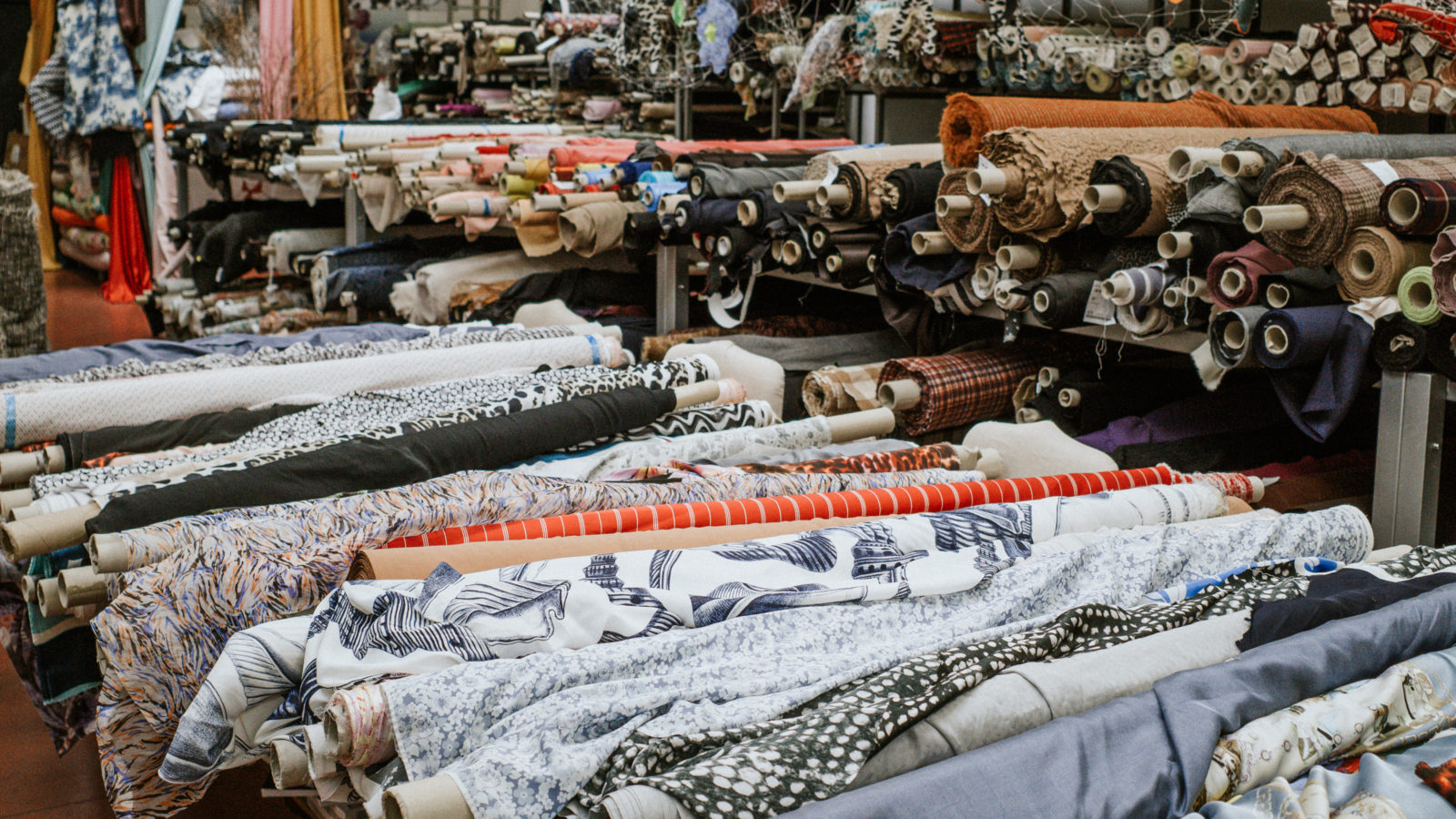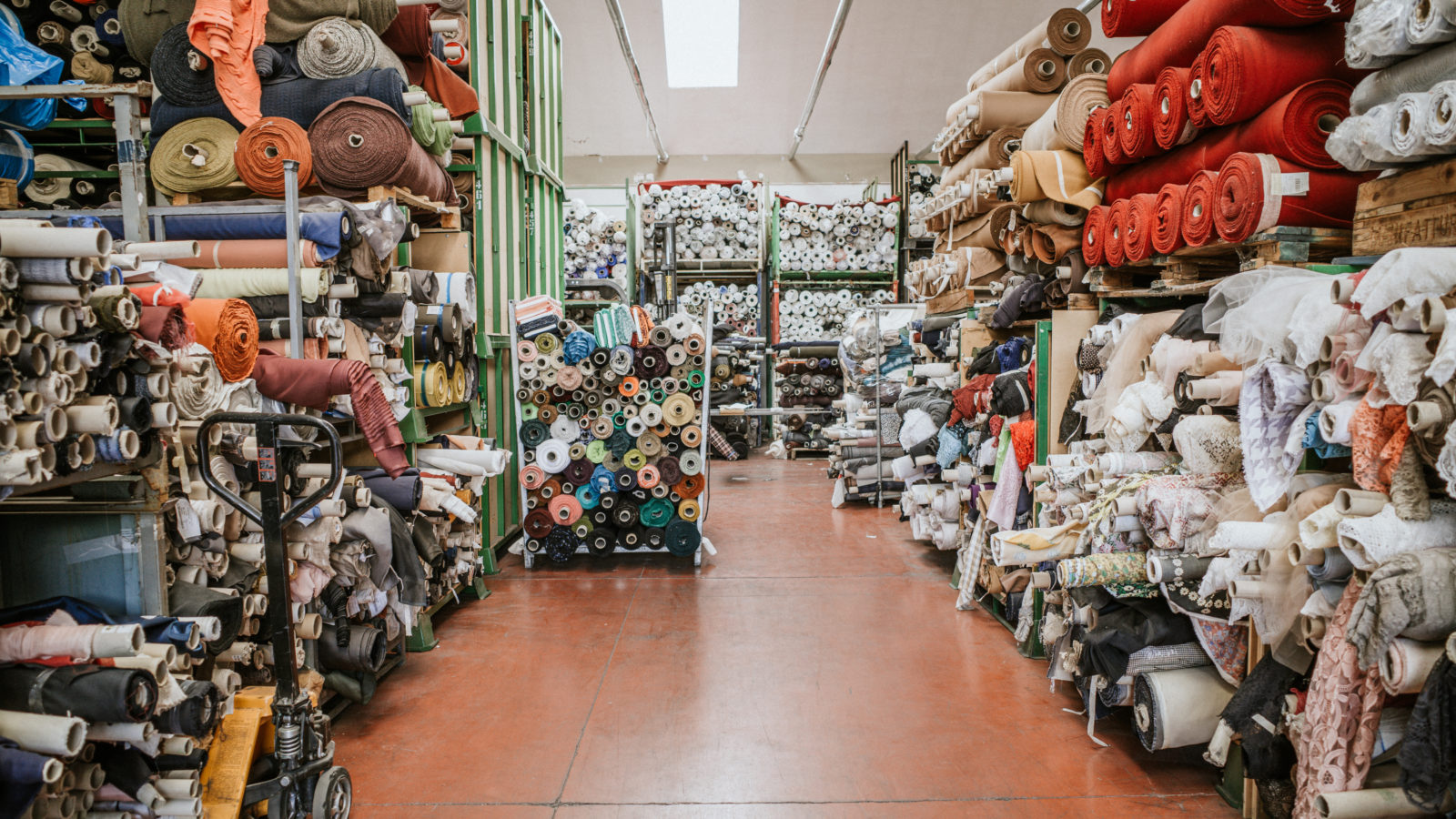What are deadstock fabrics?
Deadstock fabrics refer to fabrics that is left over from fashion production, which could be from both designer brands or textile mills. In Italy, there are many well-known textile mills and fashion brands, which are known for producing high-quality fabric. These leftover fabrics, also known as “deadstock,” can be a valuable source of fabric for fashion designers and fabric shops.
Italian deadstock fabrics are particularly desirable due to Italy’s reputation for producing high-quality textiles, and many textile mills in Italy have been in operation for centuries, producing high-quality fabrics for fashion brands.
These fabrics are often sold at a lower price than their production cost, making them a great option for those in the fashion and textile industries. In this article, we’ll explore the different types of deadstock fabrics and what makes them valuable and I will reply on the question of the century if deadstock fabrics are sustainable.

Designer’s Deadstock
One of the most valuable sources of deadstock fabrics are leftovers from fashion brands’ production. These so-called “designer’s deadstocks” are usually available in limited quantities and carry the name of the brand, which can be a selling point for some customers. However, it’s important to remember that the name of the brand only matters in context. The most important factor when it comes to designer’s deadstock is the quality of the fabrics. The more luxurious the brand, the higher the quality of the fabrics is likely to be. Designer’s deadstock is sold by the meter, usually at a higher price than other types of deadstock, but still at a discount of 2-4 times the production price.
Manufacturers’ and Mills’ Overstock
Another type of deadstock source is manufacturers’ and mills’ overstock. These fabrics are often the favorite of those in the industry because they are available in larger quantities than designer’s deadstock and can come from top Italian manufacturers such as Ricceri, Albini, and Piacenza. The price of manufacturers’ and mills’ overstock is also cheaper than the production price.
End of Season Clearance
At the end of the selling season, warehouses often want to clear out their remaining stock to make room for new arrivals. To do this, they offer deals on pallets of fabrics sold by kilogram. The average price for these fabrics is up to 10 times cheaper than their production cost, making them a unique and competitive option compared to fabrics sourced from the Asian market. Despite the lower price, the quality of these fabrics is still “Made in Italy”.
Deadstock fabrics are a great option for those looking to save money while still getting high-quality fabrics. Whether you prefer designer’s deadstock, manufacturers’ and mills’ overstock, or end of season clearance, there is something for everyone in the world of deadstock fabrics. Just remember to always prioritize quality over brand name and to look for fabrics that fit your specific needs and budget.

Is deadstock sustainable?
Deadstock fabrics can be considered a more sustainable option compared to producing new fabrics, as they are leftover materials that would otherwise go to waste. By using these materials, there is less demand for new fabrics to be produced, which can reduce the environmental impact of the textile industry. There is big misconseption that deadstock fabrics will end up in the landfill. They will not. Pre-consumer textiles are too valuable and there’ll always be a market for it.
However, it’s important to note that deadstock fabrics may not always be the most sustainable option in every situation, as the sourcing and production processes for these fabrics may still have negative environmental impacts since you might not know where it’s coming from. Additionally, it’s important to consider the potential use of harmful chemicals in the production of some fabrics, and to choose deadstock fabrics made from environmentally-friendly materials whenever possible.
Overall, deadstock fabrics can be a step towards a more sustainable future for the fashion and textile industries, but it’s important to consider the full lifecycle of these materials, from sourcing to production to disposal, in order to make informed decisions about sustainability.
Masha
